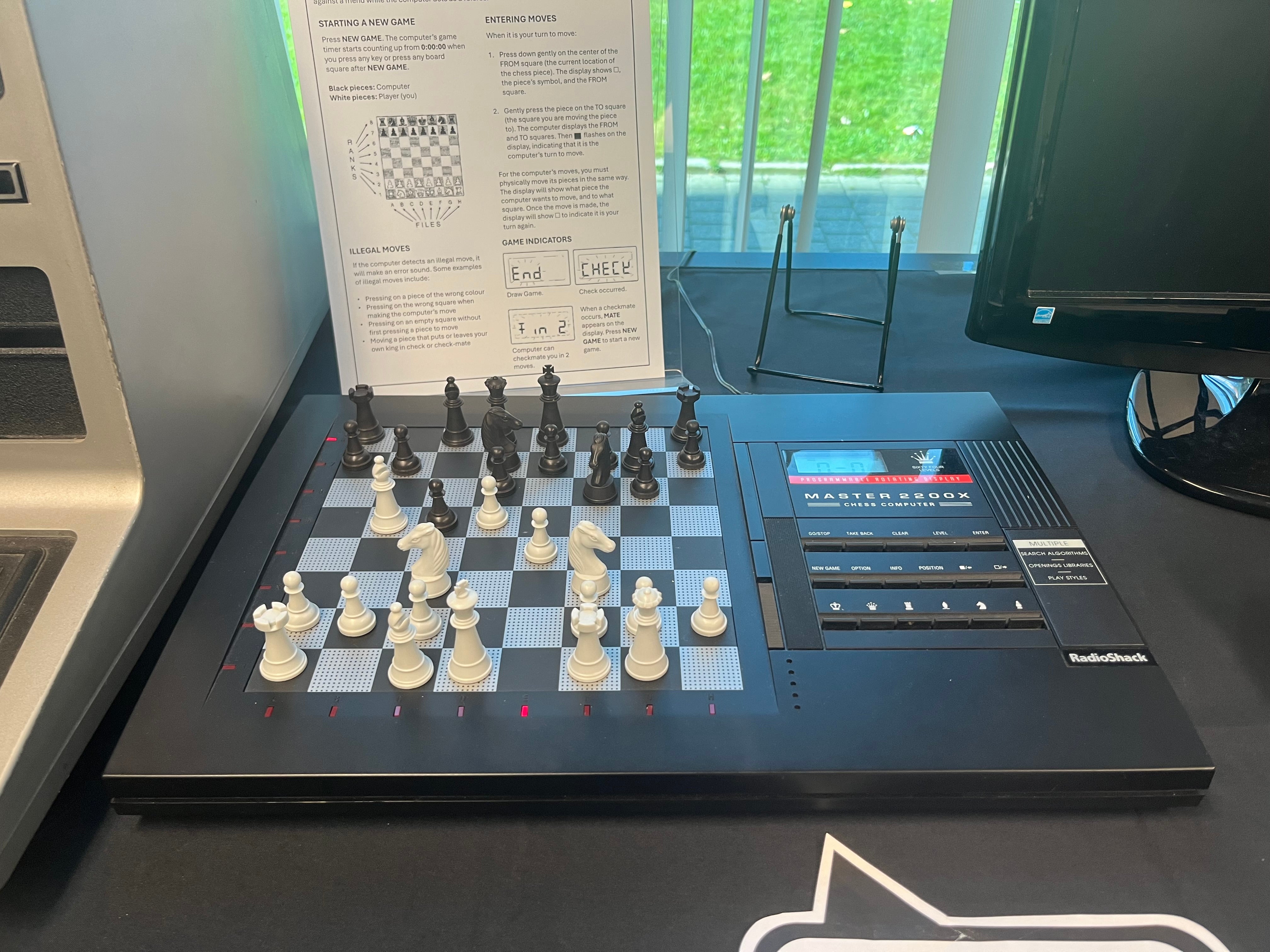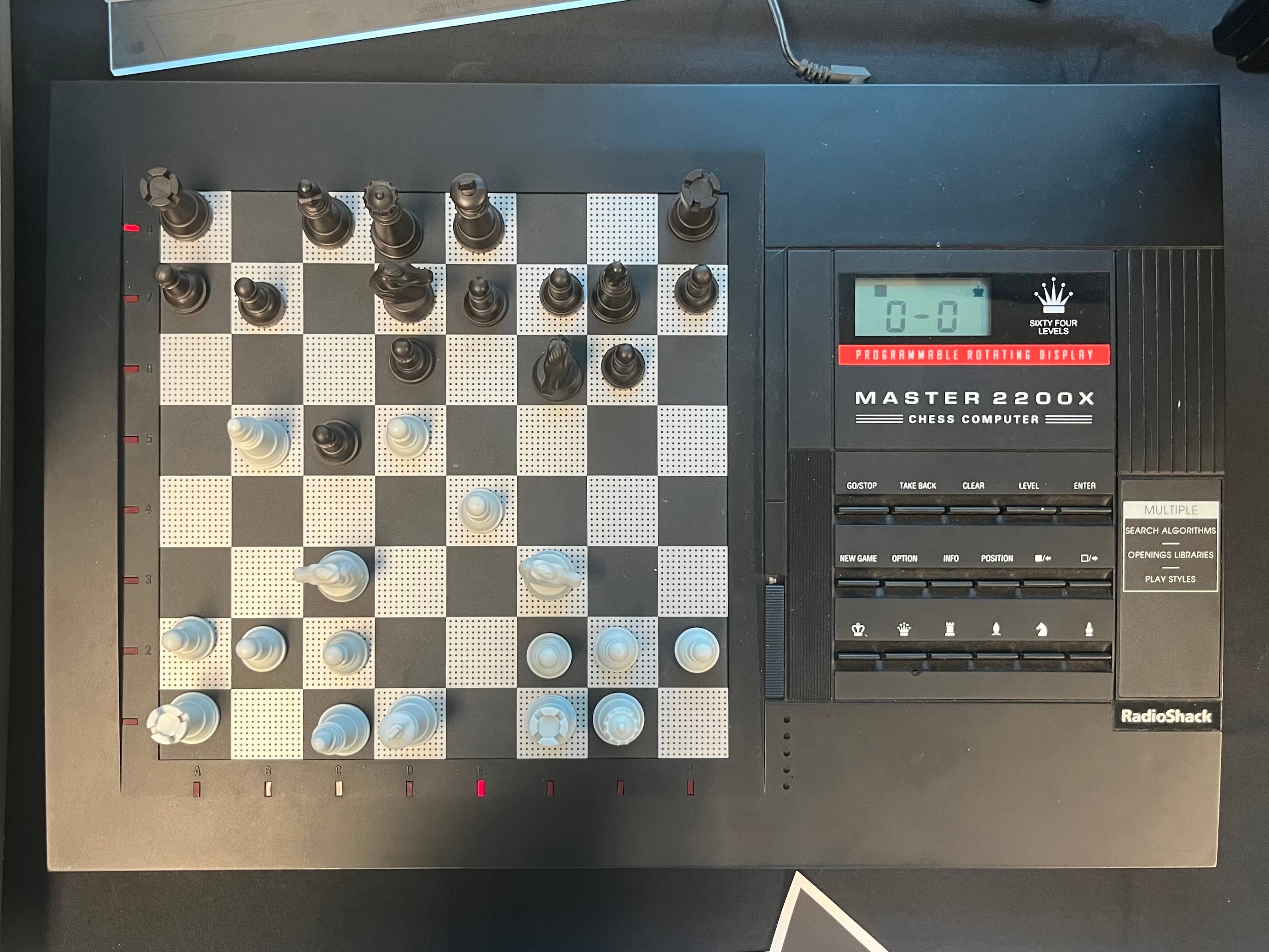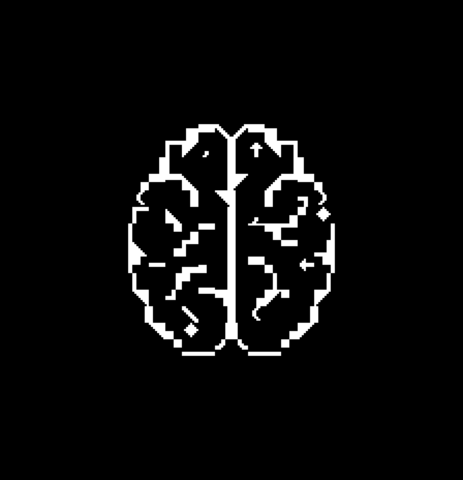
Chess AI
by Amy VanderLaanChess AI
The use of artificial intelligence in chess began in 1951 when Alan Turing, creator of the Turing Test, developed the first algorithm capable of playing chess. A few years later, in 1957, the first fully automated chess engine was created by Alex Berstein.
However, these programs were very primitive and many chess players did not believe that a computer would be able to play chess at a master level. That is, until 1997, when IBM's Deep Blue computer won in a six-game chess match against Gary Kasparov, a chess world champion. Deep Blue was specifically created to be a chess computer and was able to evaluate 200 million chess positions per second.
Our chess computers aren't quite as powerful, but they do play a good game!
Master 2200X Chess Computer
Our display included a MASTER 2200X Chess Computer, created in 1996 by RadioShack. The computer features 64 game types, making it fit for both beginners and chess experts. Players have the option of playing a match against the computer or playing against a friend while the computer acts as a referee.
To play, players move the physical chess pieces around the board, pressing gently on the squares to lock in their moves. On the computer’s turn, it displays what piece it wants to move, and to what square. The player then physically moves that piece for the computer. If you think you’re up for the challenge you can visit our office in DC 1316 to try it for yourself!
This item was donated by Trevor R. Grove.
View it in our catalogue: 2019.1.104

MASTER 2200x and TRS-80 MC-10 on display at the AI pop-up exhibit.
TRS-80 MC-10 Chess
In addition to the MASTER 2200X Chess Computer, we ran a game of chess on a TRS-80 MC-10 using a BackBit - a cartridge containing games/programs for a variety of vintage computers.
This item was donated by the University of Waterloo Institute for Computer Research.
View it in our catalogue: 2016.7.60
We wanted to see how this micro computer from 1983 would stack up against the MASTER 2200X so we tested their abilities in a computer vs computer chess match. Both computers were set to their easiest level and surprisingly, the MC-10 came out on top. Although to be fair, the computers should play against each other on their most difficult setting next. Best two out of three!
About the Author
Amy studies Computational Mathematics at the University of Waterloo and is the Computer Museum’s Fall 2024 co-op student. In her free time, she enjoys painting, collaging, and other forms of visual art making.









